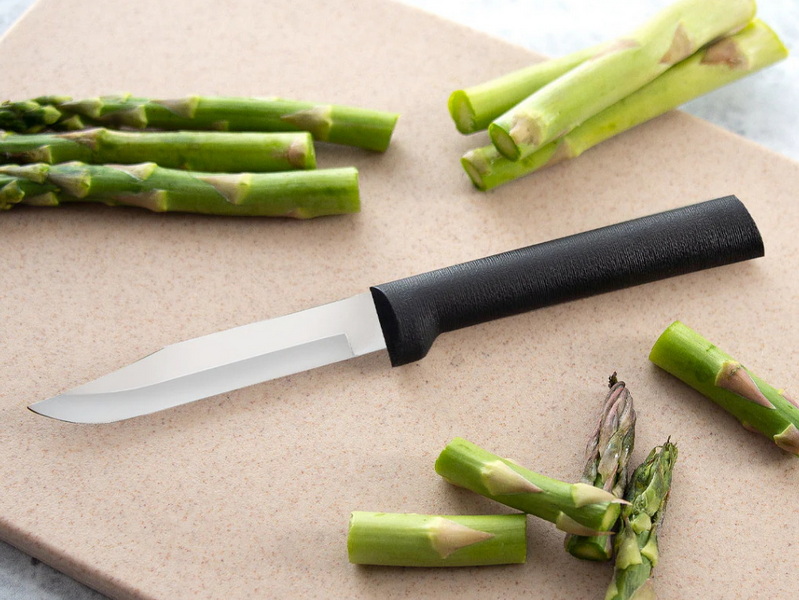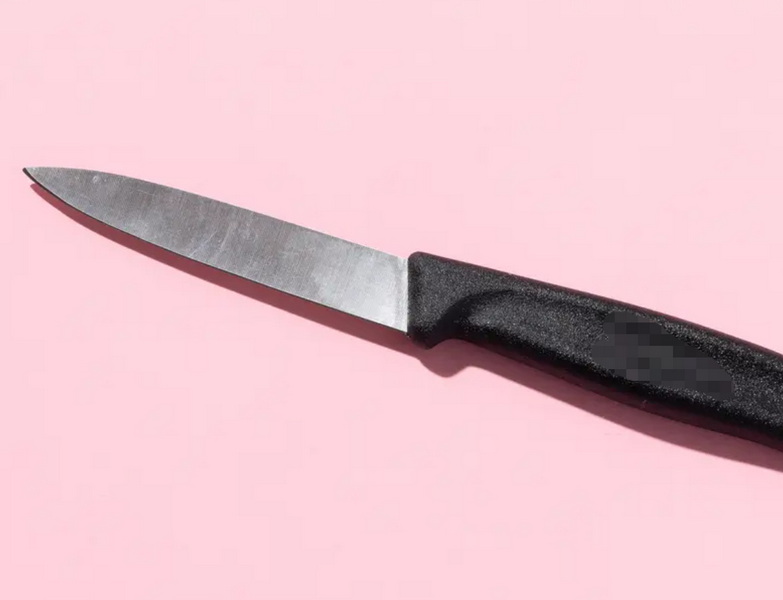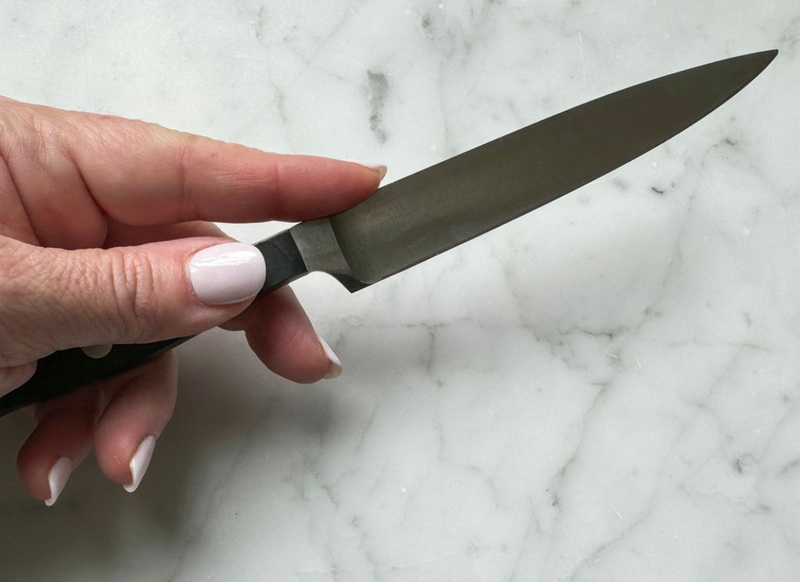- All
- Product Name
- Product Keyword
- Product Model
- Product Summary
- Product Description
- Multi Field Search
Views: 222 Author: Ann Publish Time: 2025-10-25 Origin: Site











Content Menu
● Blade Geometry and Edge Retention
● Handle ergonomics and materials
● Edge finishing and sharpening
● Coatings and corrosion protection
● Manufacturing considerations for OEM
● Performance testing and certification
● Design for different market needs
● End-user guidance and use cases
● Sustainability and lifecycle considerations
● Practical buying considerations for brands and distributors
● FAQ
>> How does blade geometry affect paring knife performance?
>> What materials balance durability and ease of maintenance for professional use?
>> Why is full tang construction important for precision tasks?
>> How should paring knives be sharpened and maintained for longevity?
>> What branding and packaging considerations maximize retail appeal?
Paring Knives are essential tools in any professional kitchen, offering precision and control for tasks that require meticulous detail. For OEM manufacturers serving foreign brands, wholesalers, and producers, understanding the top features of a professional paring knife helps tailor products that meet global standards while aligning with brand specifications. This article explores the critical attributes, materials, design considerations, and manufacturing insights that influence the performance and value of Paring Knives. It also provides practical guidance for selecting blades, handles, and edge geometries that optimize usability across diverse culinary contexts.

The blade geometry of a paring knife determines how easily a user can perform fine tasks such as peeling, trimming, de-veining, and intricate slicing. A well-designed paring knife balances a sharp tip with a controllable belly and heel to enable precision without fatigue. Common blade shapes include short-point, spear-point, and bird-beak configurations, each with its own advantages for specific tasks.
- Short-point blades provide a broad flat area near the tip, facilitating delicate peeling and decorative cuts.
- Spear-point blades offer a strong, pointed tip ideal for puncturing skins and trimming with high accuracy.
- Bird-beak profiles excel at tasks requiring tight control and tapered guidance, such as removing blemishes and preparing small fruits.
Edge retention is equally important, particularly in high-volume kitchens where frequent sharpening interrupts workflow. Paring knives designed for superior edge retention use high-hardness steels and optimized grind angles. Common steel families include VG-10, X50CrMoV15, and equivalent tool steels in OEM-grade lines. A properly heat-treated blade that achieves a balance between hardness and toughness will resist chipping while maintaining a keen edge through repeated use.
- Blade steel: Stainless steels offer corrosion resistance and low maintenance, which is critical for professional environments. Carbon-rich steels can achieve higher hardness and edge sharpness, but require diligent maintenance to prevent staining.
- Damascus and layered steels: For premium lines, patterned steels can deliver both aesthetics and performance, though manufacturing complexity increases.
- Core and cladding: Some blades use a hard core with a striker or damascus exterior to combine edge capability with toughness and visual appeal.
- Blade thickness: Thinner blades provide exceptional slicing agility but may sacrifice durability. Thicker profiles improve robustness for heavy-duty prep, though they may require more force to achieve precision.
An ergonomic handle reduces fatigue during long service periods and supports precise control during delicate cuts. Handle materials range from POM (polyoxymethylene) and pakkawood to full composites and stainless steel. Key ergonomic features include:
- Balance point: A well-balanced knife feels natural in the hand, reducing wrist strain and increasing control.
- Contoured grip: Curved, textured surfaces improve grip security, especially when hands are wet or greasy.
- Full tang and rivet construction: A robust handle connection supports longevity in demanding environments.
Trade-offs exist between aesthetics and functionality. Premium materials like stabilized wood and high-grade polymers offer visual appeal and moisture resistance, while economical options focus on durability and ease of production.
Full tang knives deliver superior strength and balance, particularly important for tasks requiring fine control and consistent performance. Bolster design, bolster-to-blade transitions, and rivet placement influence both stability and maintenance. OEM partners often choose between full tang and partial tang configurations depending on target price points and usage scenarios.
- Traditional hand honing: Produces razor-like edges with excellent sharpness but may require skilled maintenance.
- Micro-bevels: Micro-bevels extend edge life by creating a secondary, more robust edge that tolerates everyday use.
- Honing vs. sharpening: Regular honing maintains the edge between sharpenings, while periodic sharpening restores the primary geometry.
Coatings can reduce corrosion risk and improve lubricity, but excessive coatings may affect cutting feel and balance. Common approaches include light titanium nitride layers for aesthetics and minimal friction, and polymer-based coatings for ease of cleaning. OEM considerations include coating durability, food safety certifications, and compliance with international standards.
- Tolerances and precision: High-precision grinding and polishing produce consistent edge geometry, ensuring uniform performance across batches.
- Surface finish: Fine mirror finishes enhance aesthetics and reduce food adhesion, but require thorough cleaning to maintain luster.
- Laser etching and branding: Precise marking allows brands to customize paring knives with logos while preserving blade integrity.
- Quality control: ISO-compliant or equivalent QA processes ensure material consistency, hardness verification, and finish uniformity.

- Hardness testing: A calibrated Rockwell or equivalent test verifies blade hardness, ensuring the knife meets target specifications.
- Corrosion resistance tests: Salt spray or humidity chamber tests assess stainless steel performance in real-world kitchen environments.
- Food safety and compliance: Materials should align with FDA/EFSA or local standards, depending on market destinations.
- Safety features: Optional blade neck protection, tip guards, and sheath designs enhance user safety during storage and transport.
- Home-use markets: Emphasize comfortable handles, easy maintenance, and cost efficiency without sacrificing performance.
- Professional kitchens: Prioritize edge retention, balance, and durability for extended service and high-frequency use.
- Gift and premium lines: Focus on visual appeal, packaging, and customization possibilities, including private-label branding.
Proper packaging protects knives during international shipping and enhances retail presentation. Consider:
- Individual blade protection: Sheaths or blade guards prevent nicks and injuries in transit.
- Gift-ready packaging: High-quality boxes with branding elements add perceived value.
- Care and maintenance inserts: Maintenance guides and usage tips support long-term performance and customer satisfaction.
- Cleaning: Hand wash with mild detergent; avoid harsh abrasives that can scratch blades.
- Drying: Thoroughly dry after washing to prevent water spots and corrosion.
- Storage: Use a knife block, magnetic strip, or blade guards to minimize edge damage.
- Sharpening schedule: Establish a routine aligned with usage intensity to maintain peak performance.
- Precision peeling: Shorter blades enable precise control for delicate peeling of fruits and vegetables.
- Garnish work: Lightweight paring knives excel in trimming and decorative cuts.
- De-veining and trimming: The point geometry and edge feel support meticulous removal of veins and small imperfections.
- Fruit prep: Blade shape and tip control facilitate safe, accurate fruit prep without damaging delicate interiors.
- Material sourcing: Recycled and responsibly sourced materials can be appealing to brands emphasizing sustainability.
- Longevity: Durable construction reduces replacement frequency and total cost of ownership for buyers.
- End-of-life: Consider design for recyclability and minimal environmental impact in packaging and blades.
- North America: Preference for corrosion resistance, easy maintenance, and compatibility with professional kitchen standards.
- Europe: Emphasis on safety certifications, build quality, and long-lasting performance for high-end brands.
- Asia-Pacific: Growth in premium lines featuring Damascus patterns and advanced edge geometries for discerning cooks.
- Middle East and Africa: Demand for robust, reliable blades and culturally aligned design aesthetics.
- OEM customization options: Logo engraving, handle material choices, and packaging customization support branding strategies.
- Minimum order quantities: Define production feasibility and ensure scalable supply for global markets.
- Lead times and logistics: Efficient production planning minimizes delays for international shipments.
- After-sales support: Clear warranty policies and replacement parts contribute to customer satisfaction and repeat business.
A professional paring knife combines precise blade geometry, durable materials, ergonomic handling, and thoughtful construction to deliver reliable performance across professional kitchens and home settings. For OEM manufacturers, aligning blade steel choice, edge finishing, and handle design with target markets—while maintaining rigorous quality control and clear branding opportunities—drives success in global markets. By prioritizing edge retention, balance, and user comfort, brands can deliver Paring Knives that meet diverse culinary needs and exceed expectations.

The blade geometry of the Paring Knives directly affects the precision and control of the cutting process. The shape of the tip, the degree of curvature, and the ratio of the heel determine the controllability of peeling, shaping, and detailed cutting. An appropriate geometric design can achieve more precise work without increasing hand fatigue.
In professional application scenarios, stainless steel offers superior corrosion resistance and ease of maintenance, while carbon steel can achieve higher hardness and sharpness, but requires more maintenance. High-end models can be made of layered or Damascus-style steel, combining beauty with performance, but this increases manufacturing complexity and cost.
The full tang structure offers better balance and strength, especially in precision tasks that require meticulous control. It reduces the risk of deformation of the blade during high-intensity cutting and enhances durability and user confidence.
Key maintenance points include regularly sharpening the blade to maintain its geometric shape, avoiding the use of rough cleaners, hand washing and quickly drying it, and storing it in a dry environment. For daily use, a light shaping and honing process helps maintain the edge, and regular deep sharpening is necessary to restore the main geometric shape.
Brand positioning and packaging should emphasize OEM customization options, such as handle materials, logo engraving, packaging box design, and the content of the instruction manual. High-quality packaging enhances the product's grade, facilitates distributional display and gift sales, and ensures protection during transportation.
The Ultimate Professional Knives for Halal Butchery in Middle Eastern Kitchens
Chef Knife Size Guide: Choosing Between 6″, 8″, 10″, And 12″
Custom Knife Handles: How To Design A Chef Knife That Fits Your Hand Perfectly
Chef Knife Surface Treatments Guide: From Polished Migaki To Damascus Patterns
Inside Our Professional Knife Sample Room: Quality You Can See
Universal Knife Block Buying Guide: Modern Acrylic & ABS Knife Holders for Professional Kitchens
Universal Knife Block: The Complete Guide To Modern, Hygienic Knife Storage
The Complete Guide To Red Handle Knife Sets: Style Meets Functionality in The Kitchen
Professional Knives for Halal Butchery And Middle Eastern Cuisine